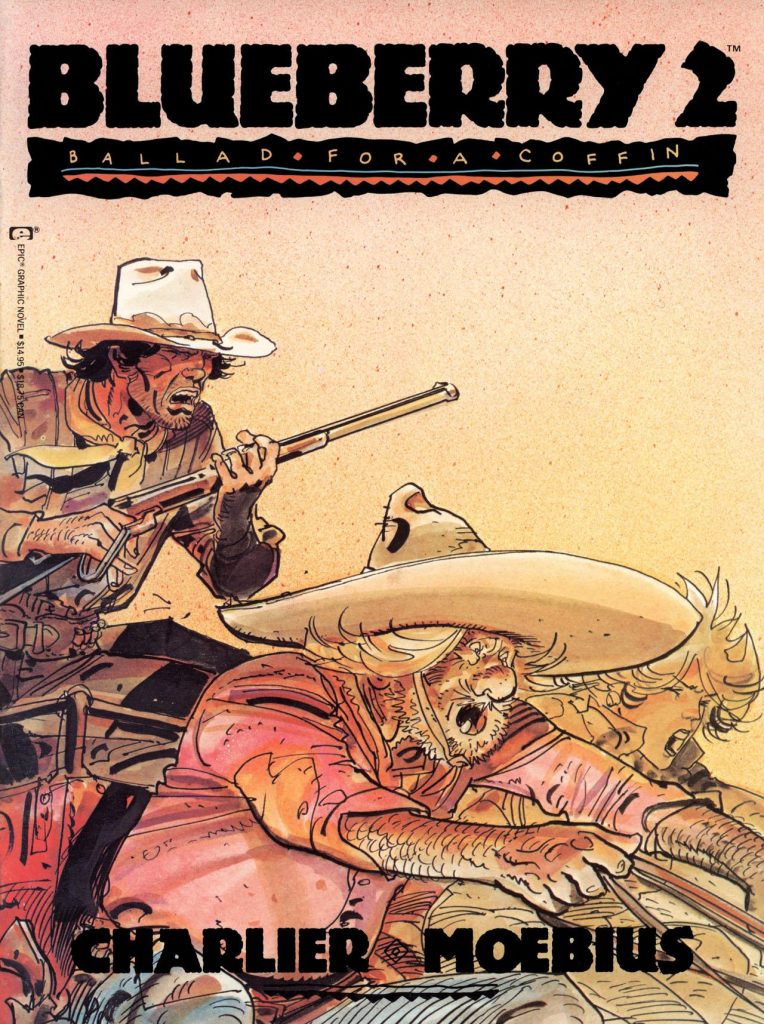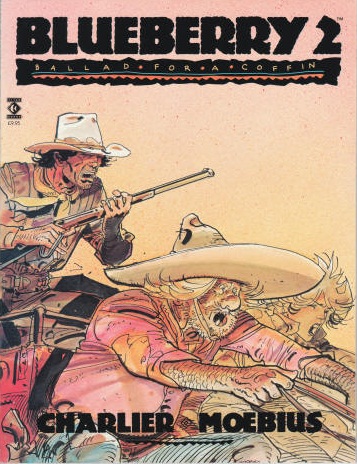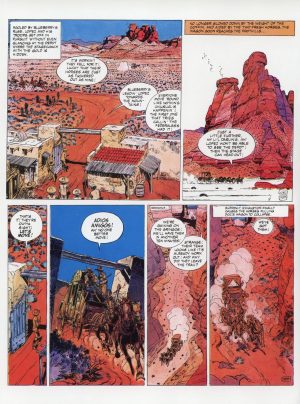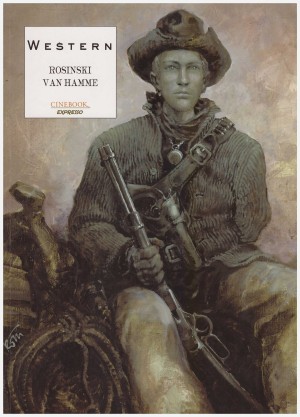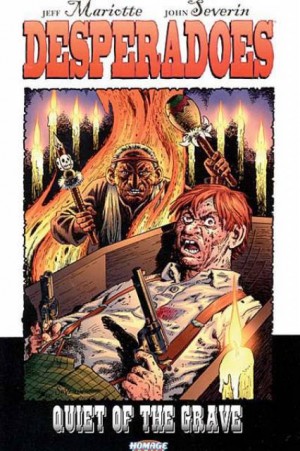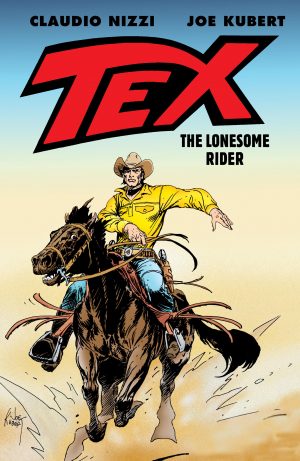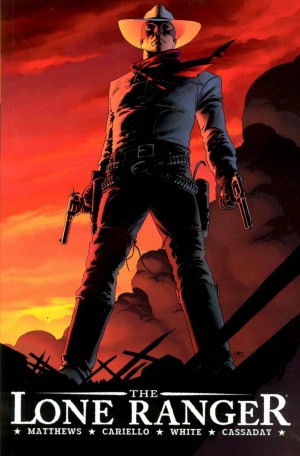Review by Frank Plowright
As had been the case with Chihuaha Pearl, Ballad for a Coffin combines what was released as two separate albums in the original French editions. They’re part of a long series depicting a seven year life-changing sequence for Blueberry that begins in 1867 with him as an army lieutenant tasked with recovering $500,000 of hidden money earmarked to finance a second Confederate war.
Jean-Michel Charlier introduced a large cast in those opening albums, and everyone of note who survived them returns in the title story. The way they’re worked in, all with a pertinent role to play, involves some superb plotting on Charlier’s part, particularly considering that during the original serialisation some characters hadn’t been seen for well over a year, the bounty hunter Donnegan, for instance. Also astonishing is how tight the plotting is considering this was a serialised story. The dramatic elements never come across as forced or contrived, and the story thrills as much collected as it would have done published week by week.
As in the previous book, Jean Giraud’s art is astonishingly detailed, period accurate, character rich, and in places stunning. The sample art is a page Moebius himself selected as a favourite. He supplies notes revealing his growing confidence in inking with a brush, and sets great store on the colour. This is strange because for every panel with some subtle lighting effects or glorious scenery there are half a dozen garish looking mish-mashes of colour. It provides required depth, but a lot of pages aren’t easy on the eye, vivid with the colour confusing beyond the limitations of the era.
‘The Outlaw’ chronicles Blueberry’s disintegration. He’s always been shown to have a wild and undisciplined side, and now unjustly condemned for crimes not committed, he’s set on a route that narrows his choices every ten pages as Charlier cranks up the tension. It’s masterful. Also notable is how the colouring has a far greater subtlety throughout, and for the remainder of the series lapses into the earlier confusion are few. It’s further noted that ‘The Outlaw’ is the final Blueberry book before Giraud developed his Moebius identity as a direct reaction to the density of the work he was having to produce. It’s only after studying pages that Giraud himself points out in accompanying notes that a drop in inspiration can be seen, but this has to be weighed against the series’ artistic quality as a whole. By many other artists these would be excellent pages.
At the end of Ballad for a Coffin Blueberry is caught between a rock and a hard place, and we’ve not even reached the halfway point of what in France was a ten album sequence that took thirteen years to complete. It continues in Angel Face, but there’s a bonus here, Giraud as Moebius in 1987 transcribing the supposed words of Chief Seattle about the sanctity of land. It’s since been considered of dubious provenance, and Moebius mixes in modern day imagery to add weight to the caustic reading of the white man’s intentions. Whether genuine or not, the speech is a powerful ecological plea, and Moebius gives it extra gravitas.
